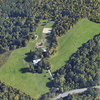Proposal to cut 600K raises objections from students teachers and parents
VOORHEESVILLE Students, parents, and teachers packed the school cafeteria on Monday to protest a wide variety of cuts proposed for next year.
The $21.8 million budget, presented March 12, would cut $600,000 from this year to stay within the state-set tax levy cap.
The board is set to adopt a proposal on April 2 and the public will have its say on May 15.
On Monday, advocates spoke in favor of small class sizes, clubs and sports.
When one parent asked why nearly all of the clubs at the school were on the chopping block, Superintendent Teresa Thayer Snyder said, “If we don’t cut here, we have to go back and look at cutting more from the classrooms.” She noted that many of the club activities would be integrated into the classroom, and certain activities, such as teen nights, could be continued with self-funding.
Class size
A group of parents with children currently in the first grade told the board they were concerned about class sizes for their kids next year, when they move up to second grade. The first grade is split into five sections, with an average class size of around 22. Second grade only has four sections. The board is not considering adding a fifth section for second grade next year, meaning the average class size for second grade could go up to 25 students, with new enrollments.
One mother of a current first-grade student said she asked her child how it felt to be in a classroom with 23 kids, and was told it was “just noisy.”
“Voorheesville boasts of having an average class size of 20.9,” said one parent. “That won’t be the case anymore after the budget cuts.” Numerous parents said the small class sizes in the school district were a huge draw for them when deciding where to settle in the Capital Region.
“I would say that nothing would make me happier than having classes of 17 to 19 students, but that’s not going to happen in a New York State public school…not anymore,” said Snyder.
“I believe we understand the second-grade class-size issue,” said board President Timothy Blow. “We’re not cutting a teacher; we’re just not adding one for the second grade.” Blow said he would ask administrators for suggestions on how to alleviate the problem of the large class.
“If there is anything we can do to address the problem, we will, but I am not making any promises…it’s going to be a very difficult year, and next year will be even more difficult,” said Blow.
School equality
Other parents felt that the elementary school was getting off easy in this round of budget cuts.
“It seems like the elementary school gets everything, and the middle and high schools get slammed,” said one parent. “We’re going to have these brilliant elementary school kids, but what happens when they get to the middle school?”
Blow responded that the elementary school saw a lot of cuts several years ago.
High School Principal Imran Abbasi said he felt more comfortable having larger classes in the high school than in the elementary school, although it was still not ideal.
“In Advanced Placement classes, for example, these are college-ready kids who, next year, could be going to lectures with 500 people,” Abbasi said, referring to college-level AP courses taught at the high school. “I would rather offer these classes with a larger number of students than not offer them at all.”
Seniority
Snyder pointed out that the equivalent of three jobs will be cut, but that number was reached by cutting portions of positions, not full positions, although that didn’t make it any easier.
Civil Service Law requires that the last hired are the first fired.
“I say to each one of them ‘This breaks my heart,’” said Snyder, in reference to teachers she had to inform of a reduction in hours. “If I was sitting across from an incompetent individual, I’d have no problem saying, ‘This isn’t working.’ But young, talented, eager people who want to be here…and to say, ‘It’s no reflection on you, it’s just where you are in seniority’…it breaks my heart.”
Some of the positions, said Snyder, were slated to be cut last year, but were reinstated with money from the federal jobs act. Those positions include the clerical and teaching assistant cuts for 2012-13. People working those jobs knew there was no guarantee they’d be kept on for the next school year, Snyder said.
Sports
Several male students stood up and told the board they had a sheet with 21 names on it, proving a continued interest in boy’s volleyball, and asked the board to reconsider cutting the sport. The boys cited statistics saying that students involved in sports get better grades, because they are more focused, and also said that Voorheesville does not have indoor track, and cutting volleyball eliminates one more winter sport option.
The students asked whether volleyball could continue if it were self-funded, and suggested a volunteer coach, and a tournament to raise funds.
Although Snyder said volunteer coaching could be complicated, because volunteer coaches must be certified, finger-printed, and screened in other ways, Blow encouraged the boys to put together a self-funding proposal.
The Voorheesville boys’ lacrosse team, in its second year, is currently self-funded.
Kristine Gravino, a board member, cautioned against the self-funding, however, and said the boys’ lacrosse team had just informed the Parent Teacher Association that it needed more money for uniforms and new goals.
“They were fine for the first year, but they are finding it hard to keep the momentum going and raise enough money,” said Gravino.
Several parents wondered if self-funding might also be an option for freshmen boys’ basketball, citing concern that, if freshmen basketball were cut, older players would be displaced from the junior-varsity and varsity teams.
At the last school-board meeting, Snyder said one of the reasons freshmen basketball was being cut was the diminishing pool of other freshmen teams in Section 2, and the increased difficulty in finding local competition.
Blow again encouraged those interested in freshmen basketball to put together a self-funding plan.
“Is putting these sports back in the budget completely off the table?” a parent asked.
“It’s low-priority,” responded Blow. “If we somehow came up with extra money, it would go to the classrooms first.”
Levy cap
Toward the end of the meeting, one parent asked why the board was not even considering going over the 2.43 percent tax levy cap mandated by the state. The budget could legally exceed the tax-levy cap if the public approved it by a supermajority, or more than 60 percent of the vote. A budget under the cap must be approved by a simple majority, or more than 50 percent of the vote.
In recent years, Voorheesville budgets have passed right near the 60-percent mark.
If the board proposed a budget that exceeded the 2.43 percent cap, and it were not approved by a supermajority, the district would be required to adopt a budget that did not exceed last year’s tax levy increase.
“We’d have to go back and make even more cuts,” Blow said.
One outspoken advocate of exceeding the tax levy cap said she believed voters would be willing to support a budget that reinstated another $50,000. For district taxpayers, she said, the impact of that extra $50,000 “wouldn’t be a big deal.”
“A good majority of our voters are senior citizens,” said Blow. “To them, going from 2.43 percent to 2.5 percent is a big deal.” When the advocate said it would be a matter of educating the voters and getting them out to vote, Blow said, “That only works if they vote in your favor.”
“If we didn’t pass the budget, do you have any idea what the consequences would be?” asked Gravino. “Where would we find even more cuts?”
“In the future, I do think we’re going to have to go for it,” said Snyder, of a budget exceeding the tax-levy cap. “But I think the 2-percent cap would work against us, politically, this year.”
“I wish for one day in my life I didn’t have to cut something, and I could add things,” Snyder concluded. “That would be so cool.”


